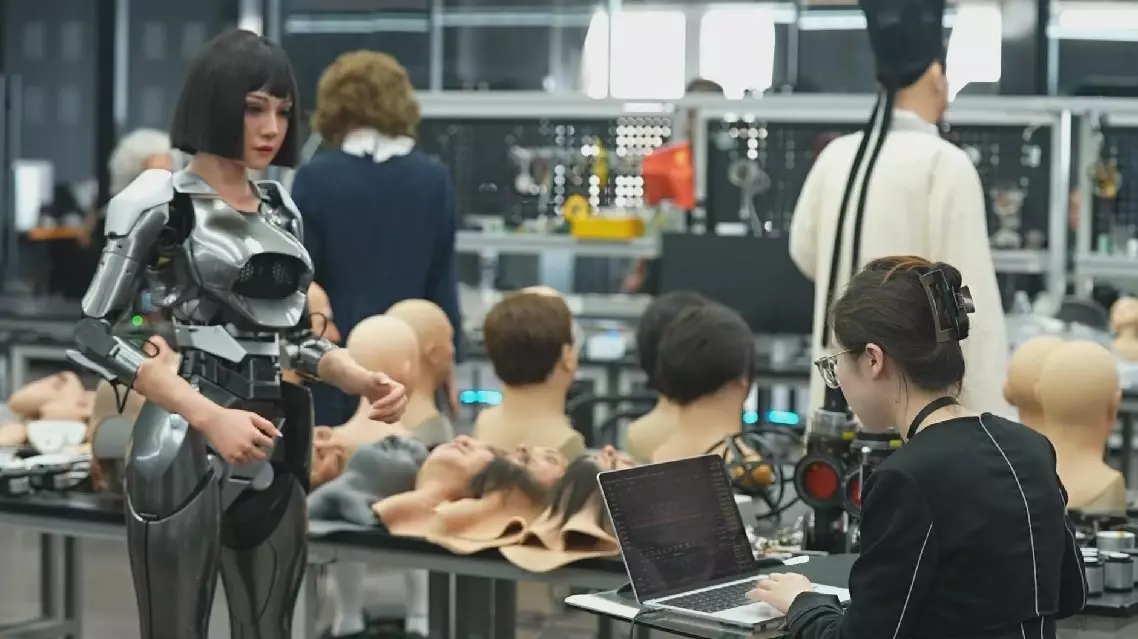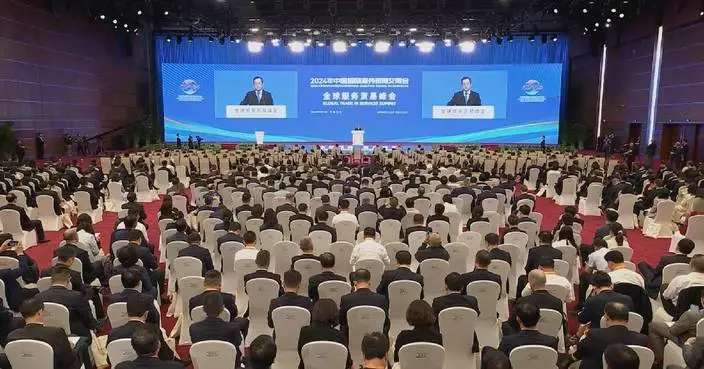Humanoid robots are poised to transform human life and work styles in ways that have never been imaged before, but some experts warn about making the transition safer and more predictable to facilitate people's adaptation.
According to a report released at the First Chinese Humanoid Robot Industry Conference in April, China's market scale of the humanoid robot industry is predicted to reach 2.76 billion yuan (about 387 million U.S. dollars) in 2024 and 75 billion yuan (about 10.52 billion U.S. dollars) by 2029, taking up about 33 percent of the entire global market. By 2035, the market size is estimated at 300 billion yuan (about 42.06 billion U.S. dollars).
Humanoid robots are rapidly moving from science fiction to reality, driven by progresses in AI technology. Walker X, one of the advanced humanoid robots developed by UBTECH, a Shenzhen-based humanoid robotics research and manufacturing company, is capable of performing various complicated tasks for human beings after several generations of upgrading and iteration.
"Our humanoid robot is currently in its fifth generation. The first generation, developed in 2016, featured only legs and no arms. In the next generation, the robot gained the ability to climb stairs and recognize objects. A year later, we introduced a new generation that included arms and a head. Walker X, launched in 2021, is our fourth-generation robot, which added enhanced artificial intelligence interaction capabilities, enabling it to perform tasks such as picking up a bottle, playing chess, and giving massages," said Gao Weifeng, senior engineer at UBTECH.
Another series of the robot has entered the automotive sector, enhancing manufacturing efficiency for carmakers.
"I believe that intelligent manufacturing, particularly in the automotive sector, may emerge as the first significant application area for humanoid robots. To support this, we launched the Walker S series in 2023, focusing on applications in industrial manufacturing," said Qin Wenlong, another senior engineer of the company.
To enhance their capabilities in making decisions and tackling daunting tasks, UBTECH has sent Walker S robots to several car factories in China to learn from real-world scenarios. At NIO, a leading Chinese electric vehicle maker, these robots are involved in multiple jobs on the production lines, including checking seat belts, testing door locks, verifying body controls, refilling oil, and applying labels.
In addition to those designed for industrial settings, another major category of the robots focuses on replicating human emotions and expressions, making them well-suited for social interactions and service roles. Ex-Robots, a company based in China's northeastern city of Dalian, is making significant strides in this area.
Xiaoqi is a representative work of EX-Robots, featuring a human-like appearance and body shape and capable of engaging in fluent conversation with people.
"Our robots are mainly built for the service industry, such as acting as guides in places like malls and museums, a reality I believe will arrive soon. That's why we gave them human-like features to help customers feel more at ease. Plus, the world is set up for humans, with all our tools and spaces designed for us. While we are aware that wheels are faster than legs, they don't do so well with stairs. So, by making our robots look and move like people, they can fit into their surroundings better and use a lot more tools, which makes them super versatile," said Li Boyang, president of EX-Robots.
To make interactions feel more human-like, Ex-Robots uses a biomimetic skin technology. The special skin keeps the robot at a temperature that's close to that of a real person and allows the robot to make realistic facial expressions. The robot's skeleton is built from flexible composite materials, enabling it to move nimbly.
"The software system is the essence of the technology, while hardware support is a fundamental necessity. In terms of hardware, China holds advantages in production, manufacturing, iteration speed, and cost. When it comes to software, particularly in artificial intelligence technology, the gap between us and the rest of the world is not significant. However, we do need to catch up in terms of computing power and the availability of AI talents," said Wang Feng, director of research and development at Ex-Robots.
As AI evolves, it increasingly replicates human thoughts and emotions. Some people are concerned that humanoid robots featuring the deep application of AI could one day replace human beings.
Experts from the Institute for AI Industry Research at the world-renowned Tsinghua University in Beijing have different opinions on this issue.
"Imagine that one day, if the large [language] models can help the robot to understand human intentions or even human emotions, maybe the robot can help us do a lot of in-house works, like cleaning rooms for us and maybe even taking care of baby for us," said Li Jianxiong, a doctoral student at the institute.
"I think that still needs a lot of research and development. What we're trying need to do is like we need to make the transition safer, because in the history, this kind of paradigm shift happened a lot of times and actually the job structure also changed. So, it's like, some of the old jobs vanished, but some of the new jobs [and] occupations actually come into being. By the way, we need to make the people clear [about] what are going to happen, so that they have this kind of expectation," said Zhan Xianyuan, an assistant research fellow at the institute.

Humanoid robots see wider application amid safety warning from experts









